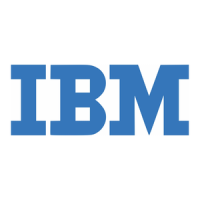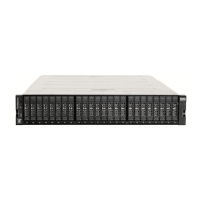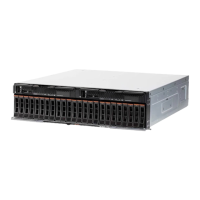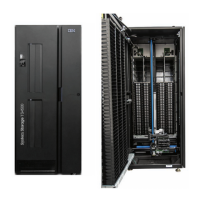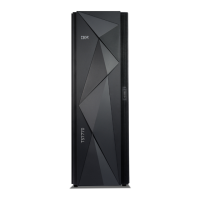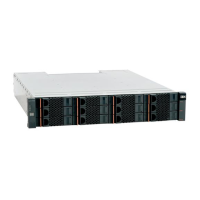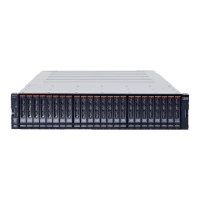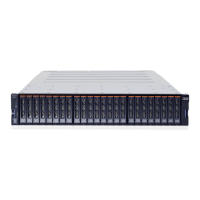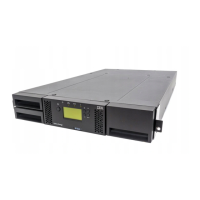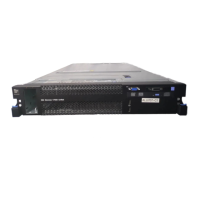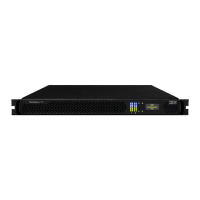
Do you have a question about the IBM FlashSystem 710 and is the answer not in the manual?
| Model | IBM FlashSystem 710 |
|---|---|
| Category | Storage |
| Storage Type | All-Flash Array |
| Form Factor | 2U |
| Number of Flash Modules | Up to 12 |
| RAID Support | Yes |
| Maximum Host Ports | 16 |
| Power Supply | Dual redundant power supplies |
| Warranty | 3 years |
| Data Reduction | Compression and Deduplication |
| Connectivity | Fibre Channel, iSCSI |
| Host Interface | Fibre Channel, iSCSI |
| RAID Levels | RAID 0, 1, 5, 6, 10 |
| Operating Temperature | 10°C to 35°C |
Information regarding country-specific safety requirements and language translations for product publications.
A specific statement regarding the product's suitability for use at display workstations in Germany.
Information on the use of fiber-optic based I/O cards or features utilizing lasers or LEDs.
Notes on the installation location of IBM servers relative to IT equipment racks.
Instructions for checking the system components after delivery and examining the chassis for shipping damage.
Details on installing HBAs/HCAs to interface the host system's PCI bus with Fibre Channel or InfiniBand devices.
Overview of initial configuration tasks, including network setup and web interface configuration.
Explains the purpose of shutting down the storage system using the front panel.
Step-by-step instructions for safely shutting down the storage system via the front panel.
Information on how to turn the system back on after a manual shutdown.
Explains the purpose of manually restarting the storage system using the front panel.
Step-by-step instructions for manually restarting the storage system using the front panel.
Explains the need to provide IP address, subnet mask, and gateway for the MCP.
Details the information required to configure a static IP address for the system.
Step-by-step guide to entering IP address, subnet mask, and gateway via the front panel.
Explains how to configure the system for DHCP IP address assignment.
Steps to obtain the MAC address and configure the system for DHCP using the front panel.
Notes on network startup issues and how to restart the network configuration.
Instructions on how to find the system's IP address using the front panel display.
Steps to open and log in to the system's web interface using a browser.
Explains how to configure network settings for the management controller via the web interface.
Step-by-step guide to configuring network settings through the web interface wizard.
Describes the two types of user accounts: high-privileged and low-privileged.
Explains how to change the default high-privileged user password for security.
Setting for the LDAP server, which must be resolvable without using LDAP.
Setting for the distinguished name (DN) of the LDAP search base.
Optional setting for the port used to connect to the LDAP server.
Optional setting for the distinguished name used for binding to the LDAP server.
Optional setting for the password used to authenticate the Bind DN for the LDAP server.
Setting for the timeout in seconds for an LDAP search operation.
Setting for the timeout in seconds for an LDAP bind operation.
Choice of encryption type for communication with the LDAP server.
Explains LU masking for restricting access to specific host servers.
Steps to create or edit host ID aliases for LU masking using the web interface.
Explains how to configure email notifications for system events and reports.
Steps to configure SMTP server, email addresses, and send system reports via email.
Explains how to view statistics logs for a specific time period and save them.
Steps to view, adjust variance, and save statistics graphs or historical data.
Explains how to add or remove system statistics from the logged history list.
Steps to access the configuration wizard and modify the logged statistics list.
Explains a common condition related to flashcards after power loss and how to resolve it.
Explains the purpose of formatting uninitialized flashcards via the command line.
Step-by-step guide for logging in and formatting flashcards using the command line interface.
